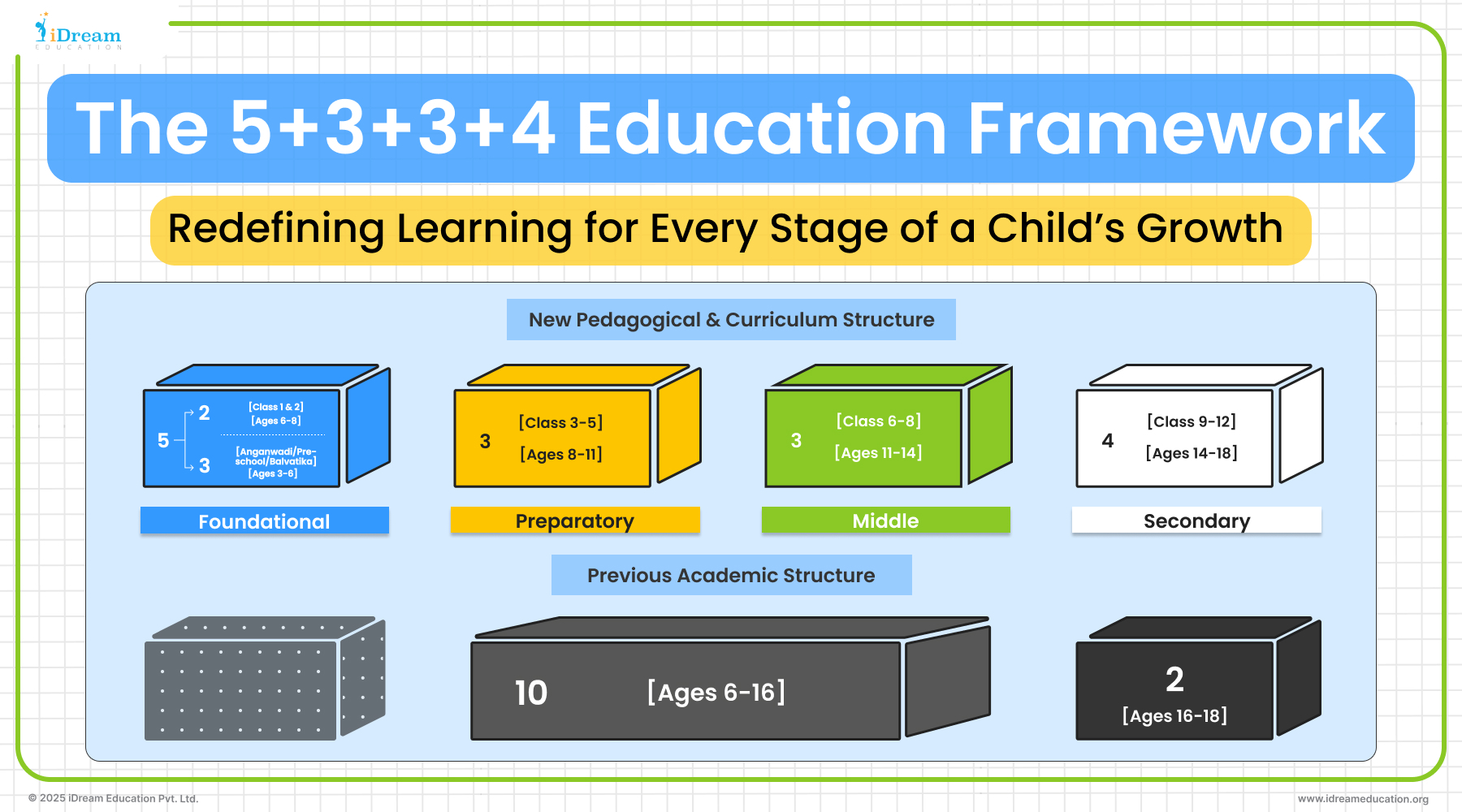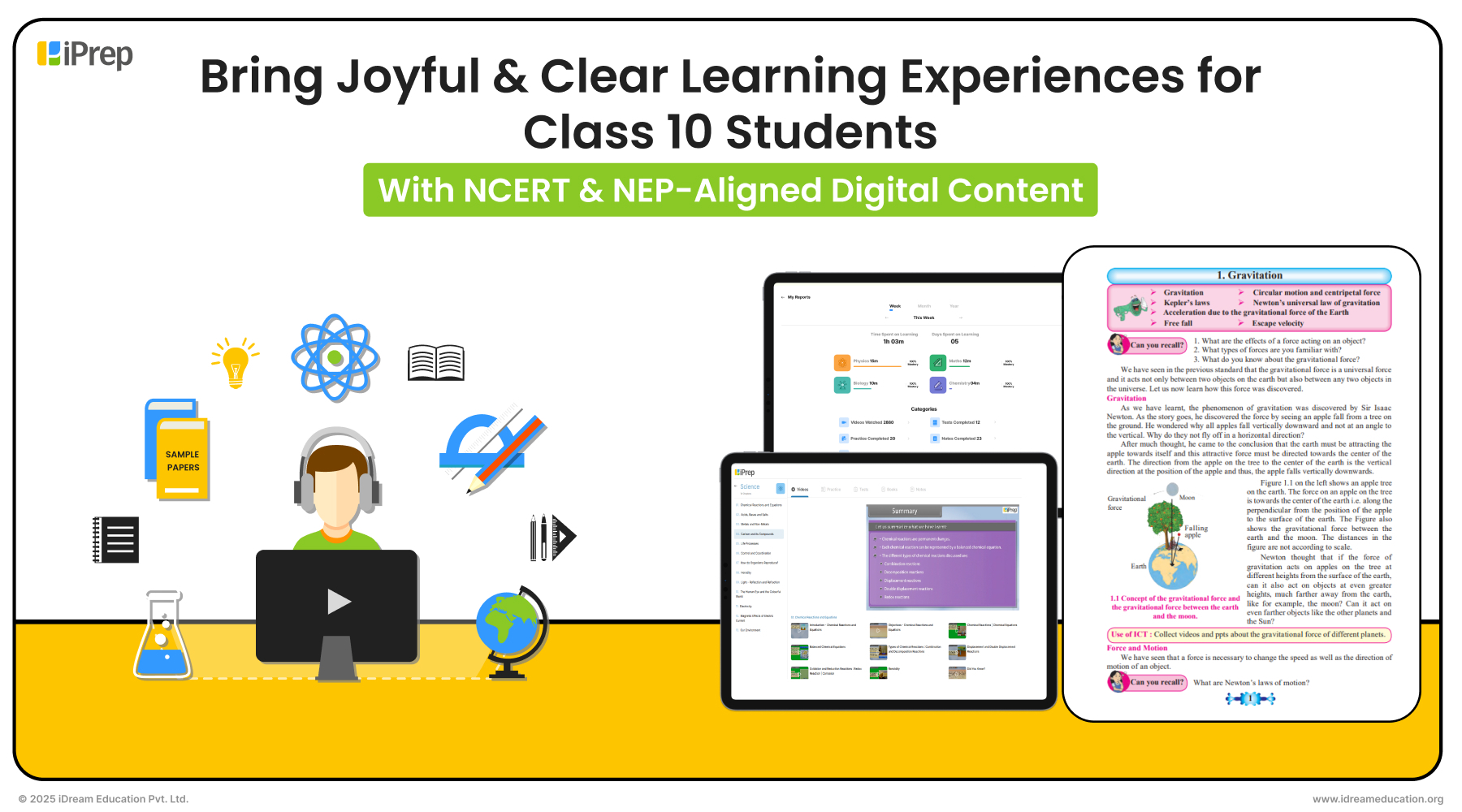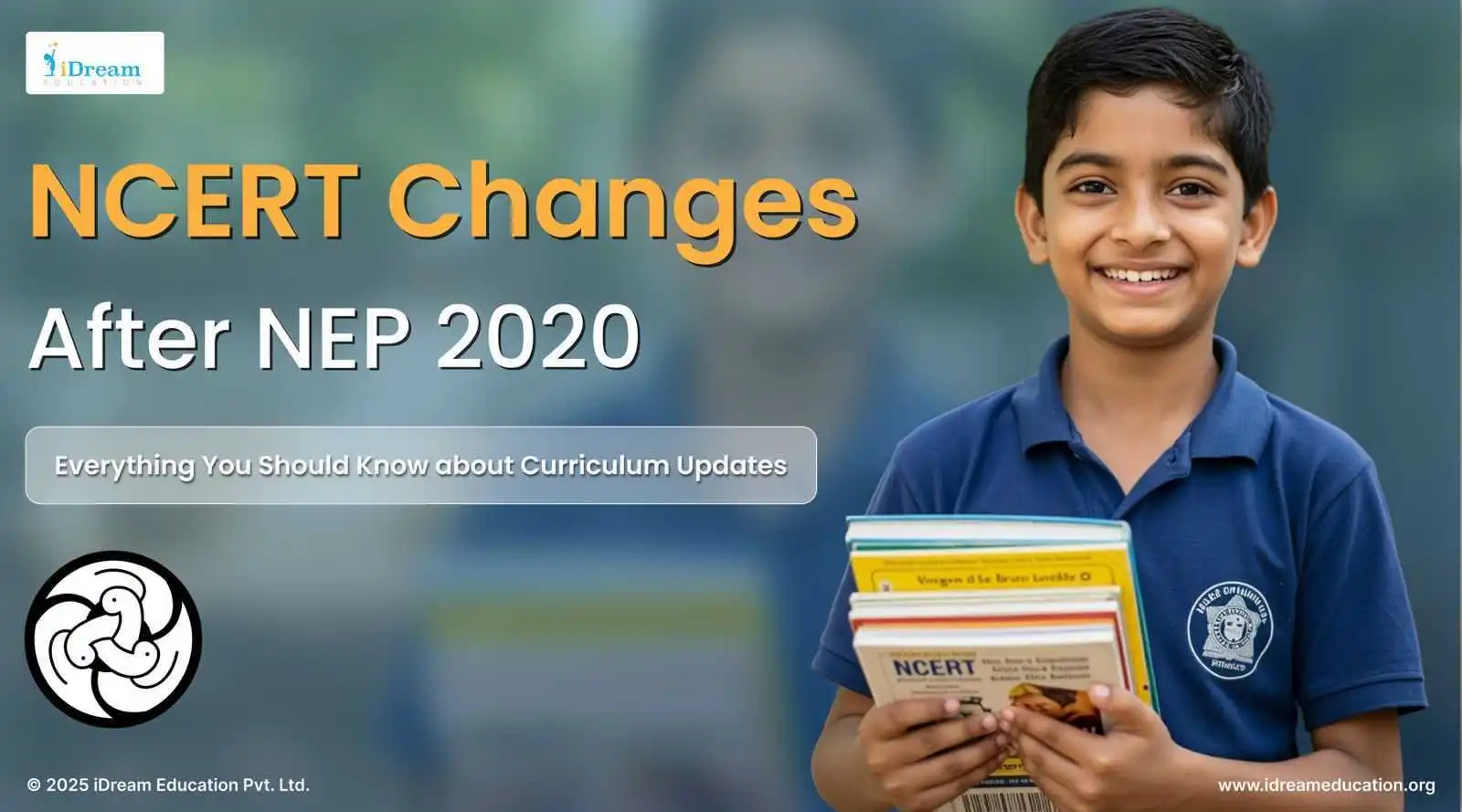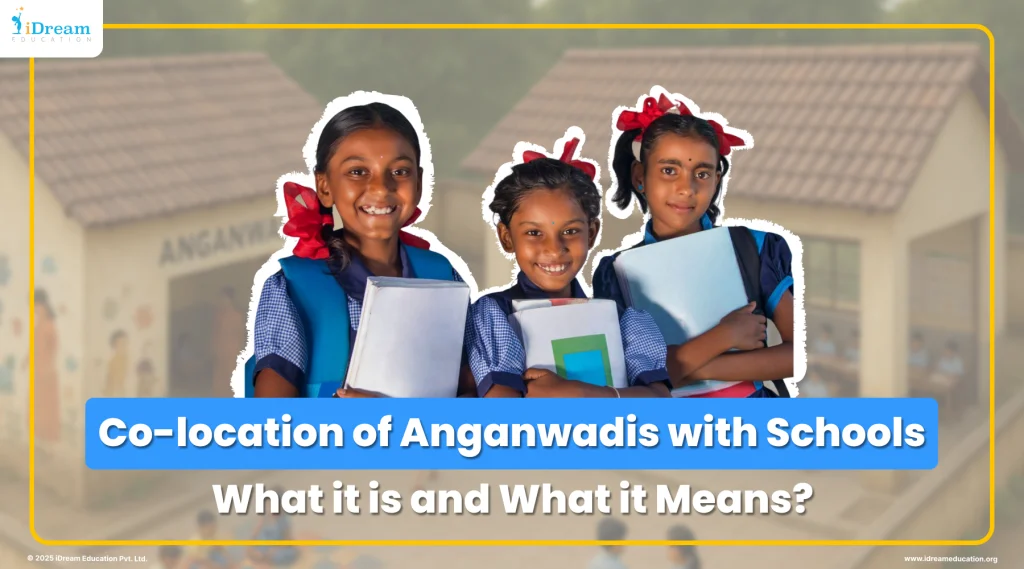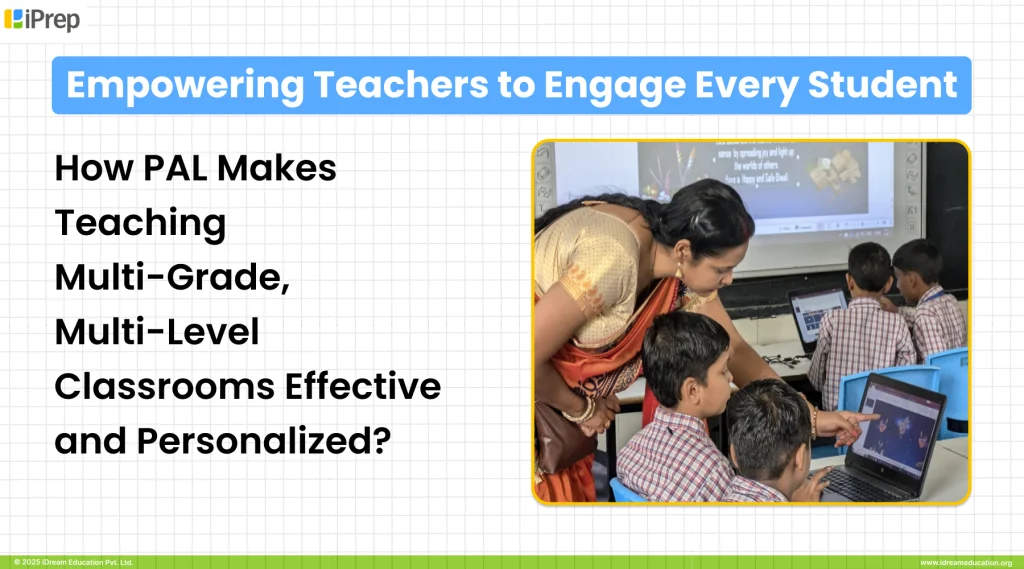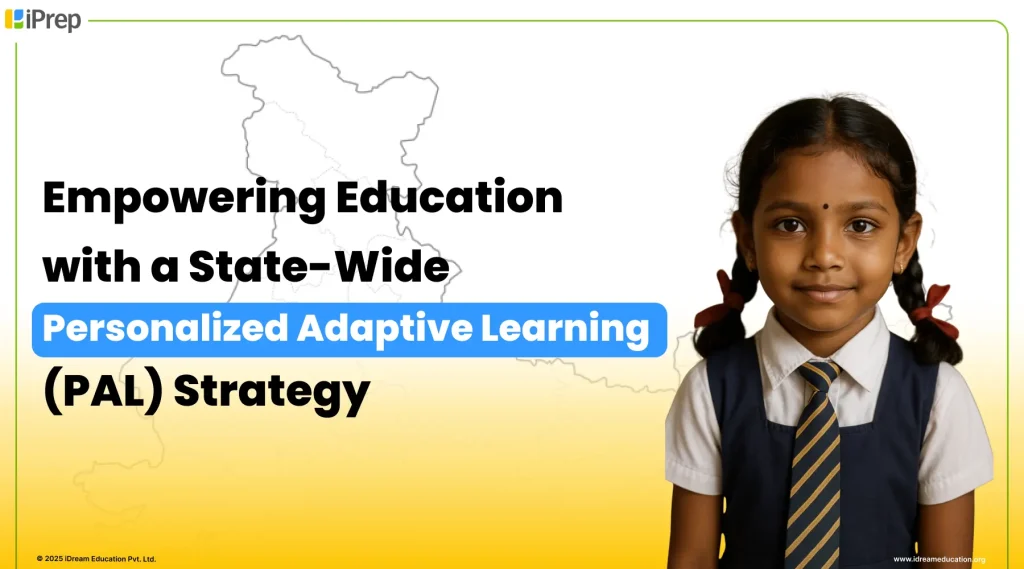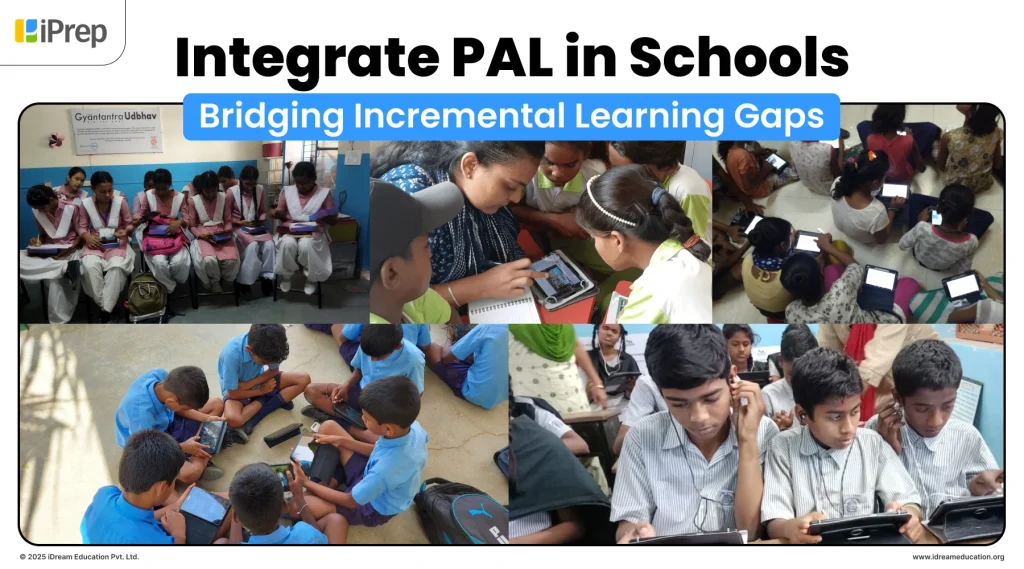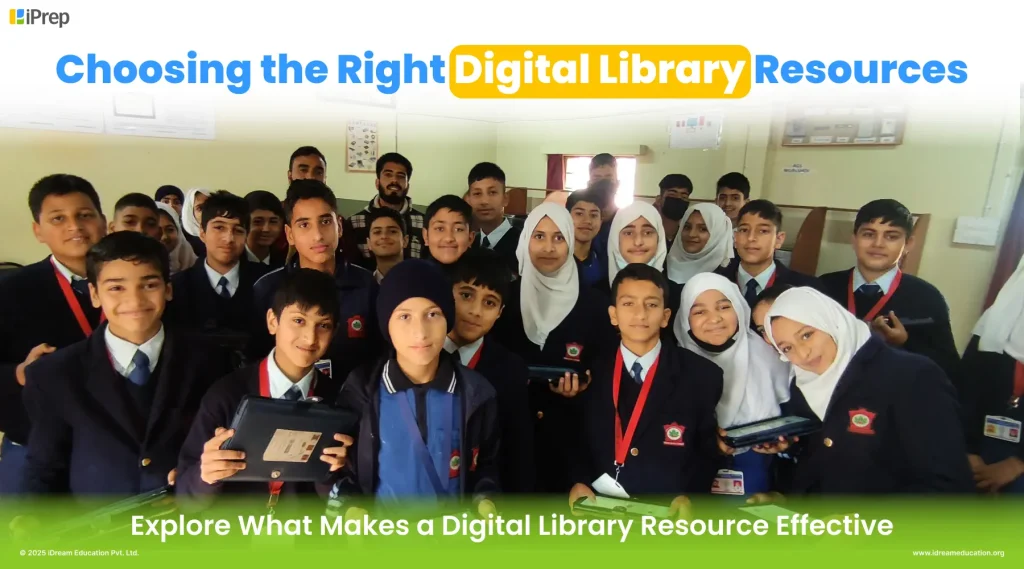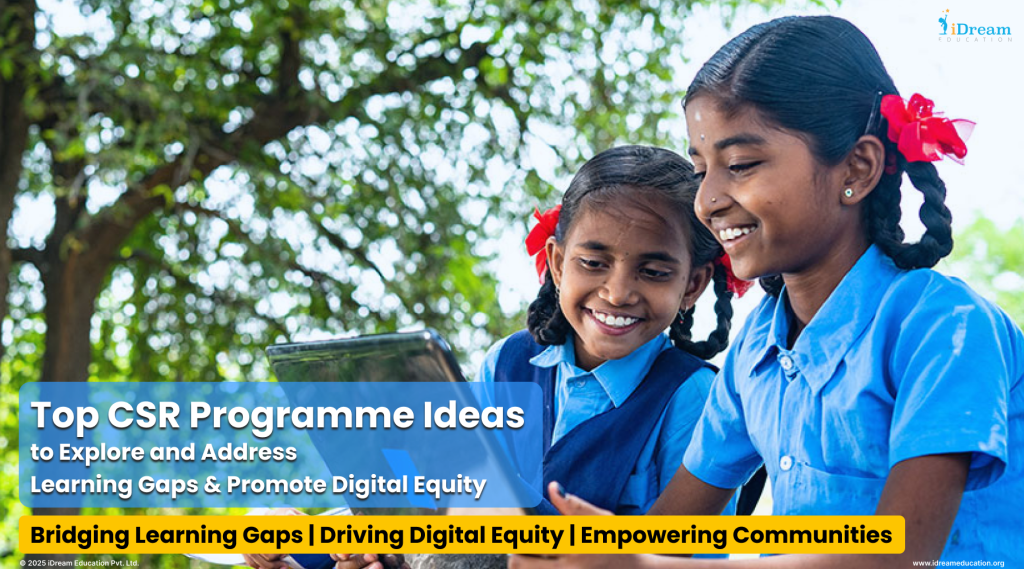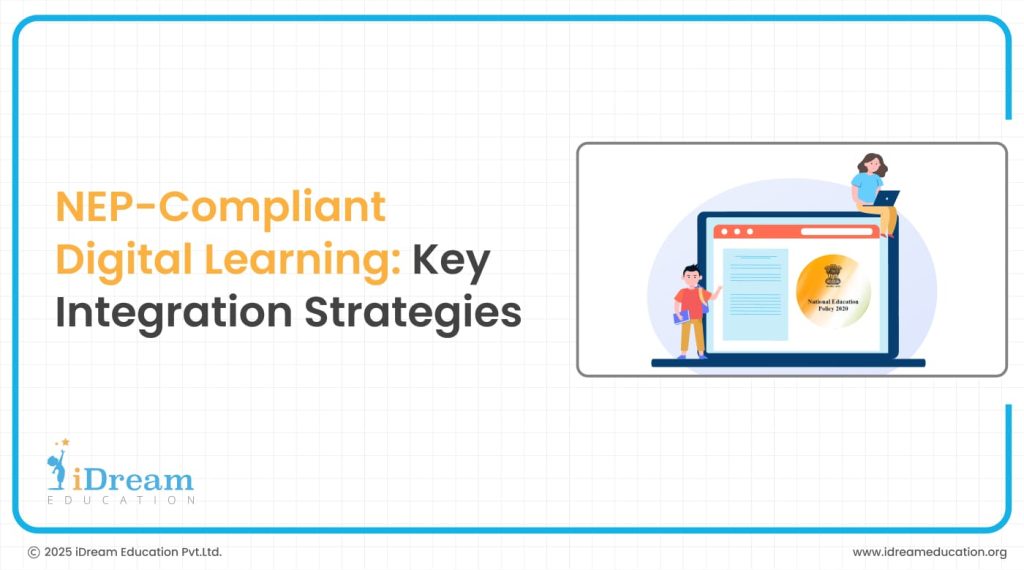
The National Education Policy (NEP) 2020, and its latest expected iterations in NEP 2025, paint a powerful picture: education that is personalised, inclusive, and honours each student’s potential.
For education leaders across India, it brings both excitement and immediate, practical questions.
How do you deliver multilingual content where resources are scarce? In a classroom of 40, how do you tailor learning to each student? And how do you measure progress when traditional tests only scratch the surface?
These are not abstract policy debates. They are the real concerns of principals in Kashmir, education officers in Rajasthan’s rural blocks, and teachers in busy schools across Maharashtra.
At iDream Education, we’ve worked alongside many of them, government and private schools alike, and we have seen firsthand the gap between aspiration and daily classroom reality. But we’ve also seen that gap close.
In this guide, we will discuss NEP-compliant digital content and ecosystems with their specific requirements.
Understanding What NEP Requires
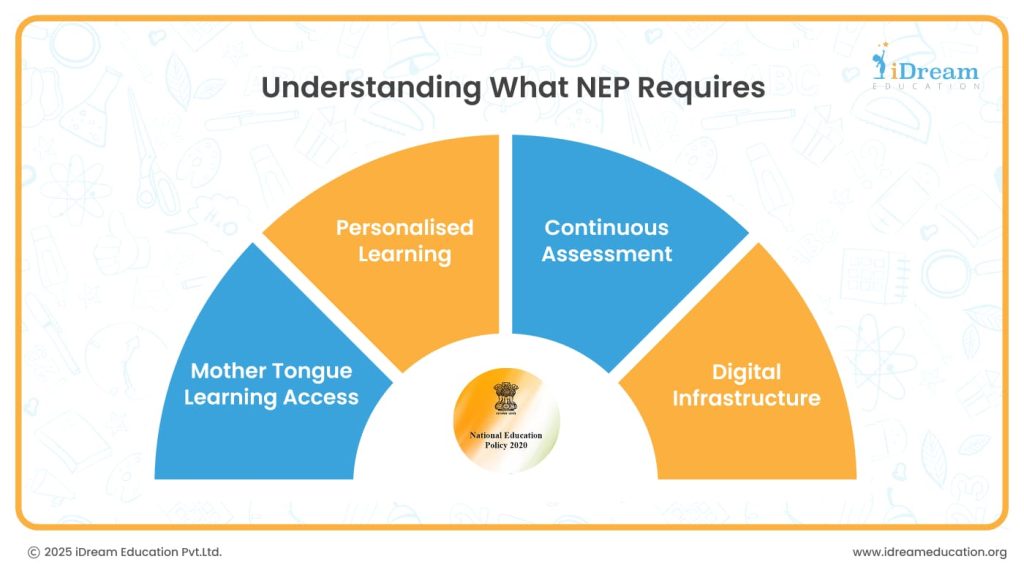
NEP is not about cosmetic reforms; it calls for a rethinking of how learning happens, built on four central principles. Let’s take a closer look at a few of its key pillars:
Mother Tongue Learning Access: Beyond Translation
When we speak of mother tongue education, it’s easy to think only of translating textbooks. NEP 2020 asks for more. It demands familiarity, recognition, and comfort. Imagine a boy in Assam tackling maths problems drawn from the rice fields he helps tend at home. Familiar settings don’t just simplify learning — they make it real.
In our experience, when digital content mirrors students’ lives, it validates who they are. It tells them: your language and your world belong here.
Personalised Learning: Honouring Every Student’s Journey
Every teacher knows — no two students are the same. Some grasp concepts quickly. Others need time to explore, practise, and revisit. Some learn through stories; others prefer hands-on tasks.
NEP encourages us to meet students where they are. Not to drag them along a uniform path, but to support each learner’s journey. In schools where personalised approaches have been introduced, we’ve witnessed something remarkable: students who once sat quietly at the back suddenly engaging, growing, and believing they can succeed.
Continuous Assessment: From Judgement to Insight
Annual exams offer a snapshot, but often too late. Continuous assessment turns that snapshot into an ongoing story. It lets teachers see learning as it unfolds, catching gaps early when support makes the greatest difference.
Classrooms can transform under this approach, shifting from high-stakes pressure to a culture where mistakes are stepping stones, not stumbling blocks.
Digital Infrastructure: Enabling, Not Overcomplicating
Digital technology is vital, but not sufficient on its own. The best implementations aren’t about shiny gadgets. They are about tools that integrate into teaching naturally, enhancing rather than complicating the learning process.
Across India, personalised digital programmes have led to improvements in grade-level proficiency. Teachers, too, report feeling more connected to their students’ learning needs. Challenges remain, of course, including infrastructure gaps, language barriers, and teacher training.
But, in our view, each challenge is also a chance to build better systems — systems that are smarter and more inclusive.
A Partner-First Approach to NEP-Compliant Digital Content Implementation
Real change comes quietly — through steady, practical steps. In our work with institutions large and small, we’ve found that lasting transformations happen when schools start from their own strengths and move at a sustainable pace.
Start Where You Are: Infrastructure That Works
Every school has its context. A rural school in Ladakh faces harsh winters and limited power. An urban school in Bengaluru, balancing high enrolments with limited space.
Wherever you are, the first step is the same: understand your environment clearly.
- Is the electricity reliable enough for a smart display?
- Are teachers already comfortable using smartphones or tablets?
- Is technical help available — even if it’s a tech-savvy teacher doubling up informally?
The best K12 learning solutions aligned with NEP fit naturally into daily teaching. For many schools, Android-based displays or simple interactive panels have proved effective, not because they are high-tech, but because they are easy to use.
And always think ahead: systems that work across devices — tablets, laptops, displays — ensure flexibility as needs evolve.
NCERT Digital Education Content That Connects: Beyond Translation
True accessibility goes beyond language. It’s about connection — linking learning to a student’s style and pace.
We’ve seen students’ eyes light up during science lessons about crops they see daily or history modules featuring local heroes they already know from family stories. These aren’t just lessons; they are affirmations of identity.
Animated modules turn concepts into stories. Interactive exercises transform mistakes into explorations. Digital libraries offer students a chance to dive into topics far beyond textbooks — stories, science experiments, art history, whatever sparks curiosity.
The takeaway here is that when students see themselves in what they learn, motivation rises naturally.
Learn More: How NCERT Lays The Foundation For Effective NEP Implementation – iDream Education Blog
Enabling Teachers: Technology as a Teaching Partner
At the end of the day, no digital tool can replace a good teacher. Technology works best when it becomes a partner — amplifying teachers’ voices, easing their prep time, and offering sharper insights into student progress.
We’ve seen it. In schools where teachers are supported with user-friendly platforms and training that focuses on pedagogy, not just device operation, morale rises alongside results.
Teachers don’t want manuals. They want answers to real questions:
- How will this help me reach more students?
- Can this make my lessons more engaging?
- Will it save me time?
Peer mentoring often accelerates adoption far better than one-off workshops. And a single-window support system — answering both technical and teaching queries — ensures teachers never feel stranded.
Data That Drives Growth: Assessment for Learning
Data must serve learning, not the other way around. Real-time analytics allow teachers to spot struggles early. Administrators get a view across classrooms, seeing patterns that guide smarter support and resource decisions.
When progress tracking moves away from ranking and towards celebrating growth, students shift, too. They stop fearing assessments and start seeing them as a tool for their own journey.
Personalised Adaptive Learning: Making Individual Growth Possible
Personalised adaptive learning represents NEP’s one of the most forward-looking promises. We’ve seen students thrive when diagnostic assessments tailor learning paths to their needs, providing reinforcement or acceleration as needed, without judgment.
In Haryana’s e-Adhigam programme, over 500,000 students now receive support shaped to their strengths and challenges. Rajasthan’s initiative has reached two million students, helping them recover learning lost during COVID disruptions.
What makes these systems work?
- Automatic daily adjustments to learning material.
- Offline functionality for remote areas.
- Multilingual interfaces, making sure no student is left out.
And the technology? It doesn’t demand flashy laptops. Basic tablets or even smartphones work, syncing automatically when connectivity is available. This way, a small change in tools represents a big leap for learning equity.
Learn more: Personalized and Adaptive Learning For Government Schools- iDream Education Blog
Addressing Real-World Digital Content Implementation Concerns
We regularly hear the same concerns, and have seen practical solutions succeed.
- “We don’t have enough infrastructure.”
Pilot a few classrooms first. Multi-purpose devices — not specialised, expensive tech — stretch budgets and build early wins. - “Our teachers feel overwhelmed by technology.”
Focus on enhancement, not replacement. Let teachers build confidence through tools that align with their teaching strengths. Peer mentoring works wonders. - “Content doesn’t reflect our local context.”
Work with partners who customise. When students see their world in lessons, learning becomes personal and powerful. - “We’re worried about sustainability.”
Choose partners who stay involved. Cloud-based management reduces on-site technical demands. Integrated systems simplify maintenance and long-term costs. - “How do we measure success?”
Go beyond test scores. Engagement analytics and qualitative feedback from students and teachers tell a fuller story.
Takeaway
The evidence is clear: successful NEP-compliant digital content doesn’t require dramatic overhauls or perfect infrastructure. It emerges from understanding existing strengths, starting with practical pilots, and building systematically towards comprehensive digital learning ecosystems.
Education leaders who achieve lasting transformation share common approaches. They assess honestly before investing. They prioritise solutions that enhance rather than complicate teaching, and they choose partners who understand both policy requirements and ground-level realities.
iDream Education envisions every student having equal learning and growth opportunities. We empower education leaders through comprehensive solutions that address infrastructure, content, and training needs within integrated frameworks designed specifically for Indian educational contexts.
Through iPrep Digital Class for smart classrooms, iPrep Digital Library for tablet-based learning labs, and iPrep PAL for personalised adaptive learning, we enable institutions to achieve grade-level learning outcomes while maintaining practical implementation approaches.
These solutions operate effectively across diverse environments—from well-resourced urban schools to challenging last-mile rural institutions.
To learn more, you may contact us at +91 7678265039.
You can also share your details here or write to us share@idreameducation.org.



